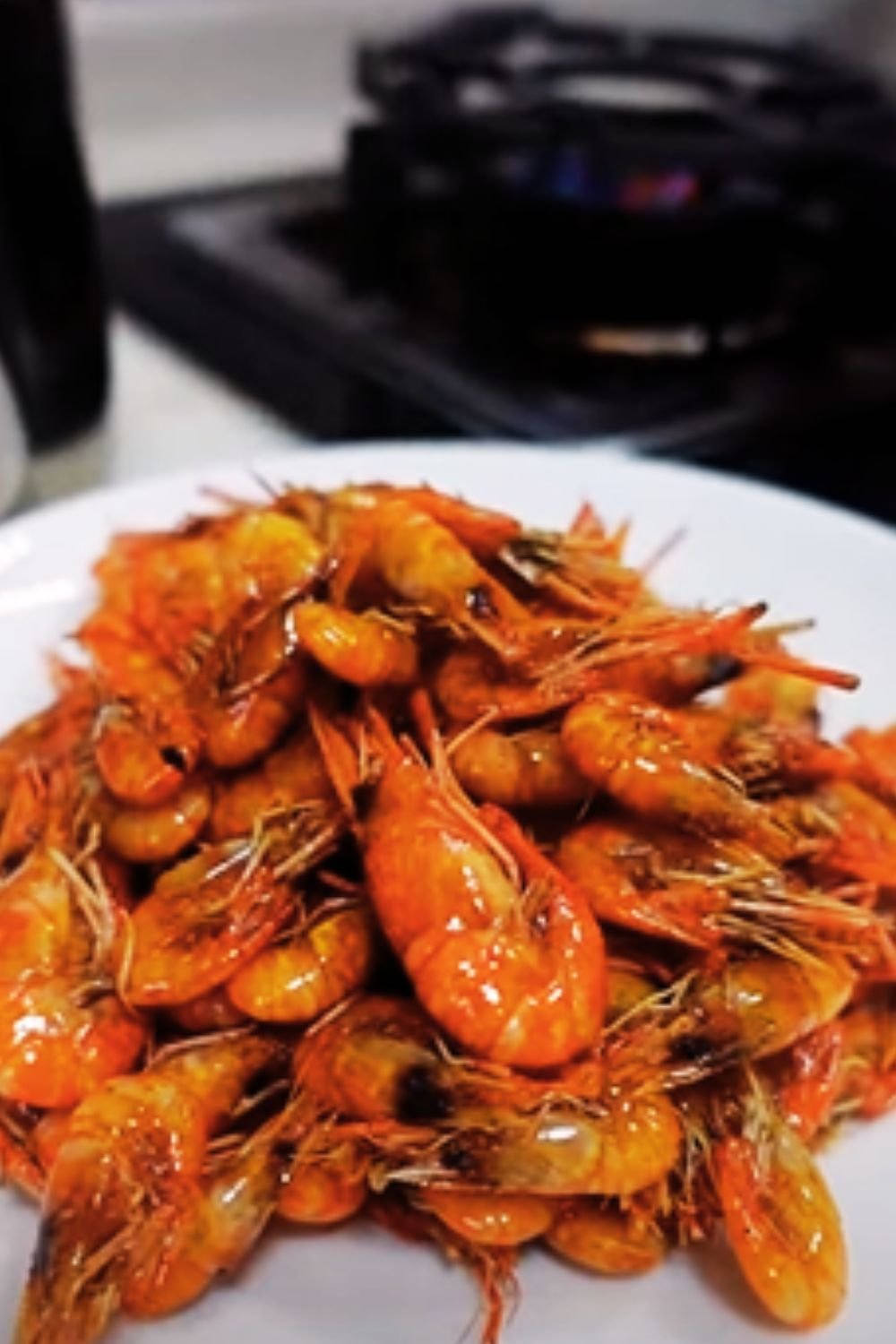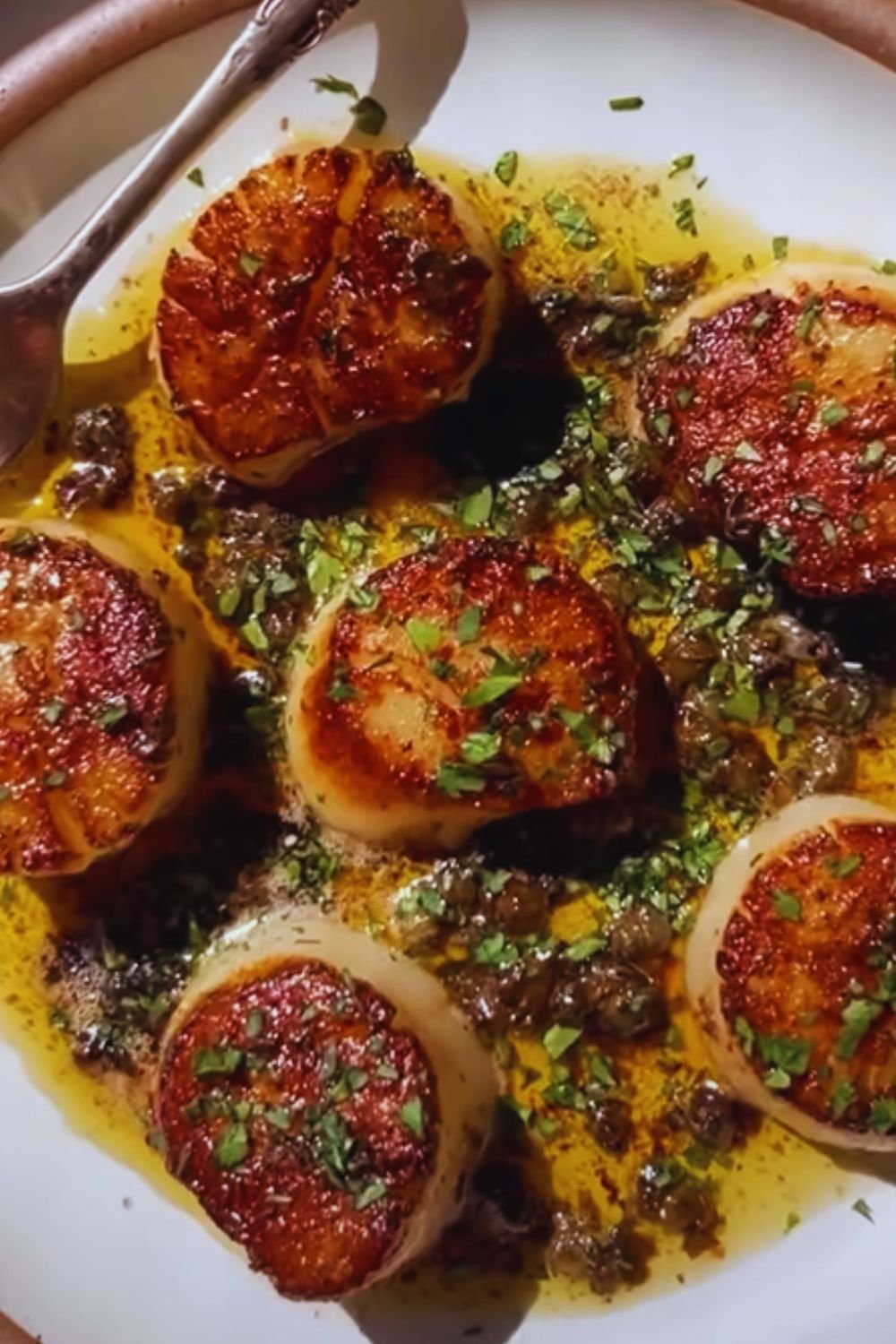Introduction
I still remember my first encounter with You Bao Xia (油爆虾) during my culinary journey through Shanghai. The sizzling sound of fresh shrimp hitting the wok, the intoxicating aroma of ginger and scallions wafting through the air, and that distinctive glossy sauce coating each perfectly cooked morsel. Shanghai Shrimp Stir-Fry might look fancy on restaurant menus, but I’ve spent years perfecting this recipe at home, and I’m thrilled to share all my secrets with you today.
You Bao Xia, which literally translates to “oil-exploded shrimp,” is a classic Shanghai dish that showcases the region’s love for fresh seafood and subtle, yet complex flavors. Unlike many Western preparations that might mask the natural taste of shrimp, this technique actually enhances it through quick high-heat cooking and a harmonious blend of aromatics. The result? Succulent shrimp with a delicate crisp exterior and that signature “wok hei” (breath of the wok) that’s the hallmark of authentic Chinese cooking.
Whether you’re a seasoned home cook or just beginning your culinary adventures, this dish delivers impressive results without excessive complexity. Let’s dive into the fascinating world of Shanghai cuisine and create a dish that will transport your taste buds straight to the bustling streets of this magnificent coastal city.
Key Ingredients
The Star of the Show: Selecting the Perfect Shrimp
Finding the right shrimp is fundamental to this dish. Here’s what I’ve learned through countless trips to fish markets and many cooking experiments:
- Size Matters: Medium to large shrimp (21-25 count per pound) work best for this recipe. They’re substantial enough to withstand the high heat without overcooking, yet not too large that they take too long to cook through.
- Fresh vs. Frozen: While fresh is wonderful if you live near the coast, high-quality frozen shrimp that’s properly thawed can be equally excellent. I’ve found that IQF (Individually Quick Frozen) shrimp often retain better texture than “fresh” shrimp that might have been previously frozen anyway.
- Shell On or Off?: Traditional Shanghai preparation keeps the shells on (often with just the heads removed) as they contribute tremendous flavor. However, I’ll provide options for both preparations, as I understand many home cooks prefer the convenience of shell-off cooking.
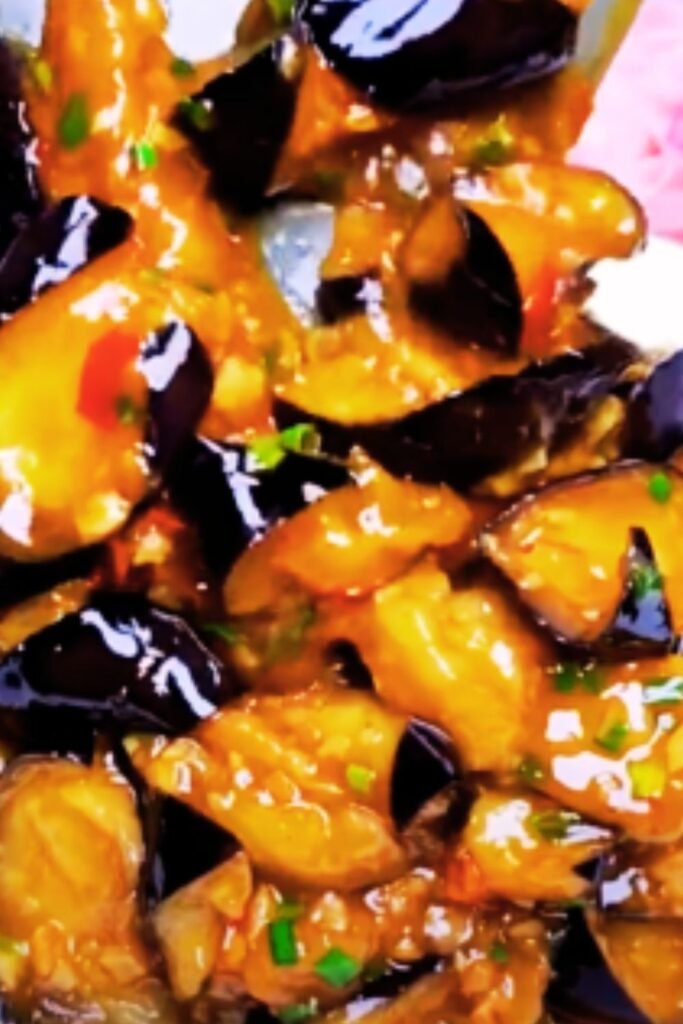
The Aromatics: Building the Flavor Foundation
The aromatic components in You Bao Xia are simple but crucial:
- Ginger: Young, juicy ginger provides that distinctive warmth and slight spiciness that cuts through the richness of the dish. I recommend using about 2-3 inches, sliced into thin matchsticks.
- Scallions (Green Onions): Both the white and green parts play different roles. The whites provide aromatic foundation, while the greens add fresh color and flavor finish. You’ll need about 4-5 stalks.
- Garlic: 3-4 cloves, thinly sliced or minced, depending on how prominent you want the garlic flavor to be.
The Sauce Elements: Creating Harmony
The sauce in You Bao Xia isn’t thick or heavy, but rather a gloriously light glaze that clings to each shrimp. Here’s what creates magic:
- Shaoxing Wine: This traditional Chinese rice wine adds depth and complexity that’s impossible to replicate. If unavailable, dry sherry makes an acceptable substitute.
- Light Soy Sauce: Provides saltiness and umami without overwhelming the delicate flavor of the shrimp.
- Sugar: Just a touch balances the salty and tangy elements.
- White Pepper: Traditional in Shanghai cuisine, it offers a different type of heat than black pepper—more aromatic and less sharp.
- Sesame Oil: Added right at the end for fragrance rather than as a cooking medium.
Essential Equipment
While You Bao Xia is adaptable to Western kitchens, certain equipment will help you achieve more authentic results:
The Wok: A carbon steel wok is ideal for this dish because:
- It can reach extremely high temperatures quickly
- Its curved shape allows for efficient tossing
- The patina of a well-seasoned wok adds subtle flavor
If you don’t have a wok, a large heavy-bottomed skillet (preferably not non-stick) will work in a pinch, though you might not achieve the same “wok hei.”
Spider Strainer or Slotted Spoon: Essential for removing the shrimp quickly during the blanching step.
Sharp Knife: For precision prep work, especially if you’re keeping the shells on but need to butterfly the shrimp for easier eating.
Preparation Techniques
Preparing the Shrimp
The way you prepare your shrimp before cooking significantly impacts the final result. Here’s my step-by-step approach:
- Cleaning: Whether using shell-on or shell-off shrimp, the deveining process is crucial. I make a shallow cut along the back and remove the dark intestinal tract.
- For Shell-On Preparation (Traditional):
- Remove the head (or keep it on for extra flavor if very fresh)
- Cut through the shell along the back where you deveined
- Remove legs if desired
- For easier eating, butterfly slightly but keep the shells attached
- Marination: This brief step makes all the difference:
- Toss shrimp with 1 tablespoon Shaoxing wine
- Add a pinch of salt and white pepper
- Include 1 teaspoon cornstarch to help moisture retention
- Let sit for 10-15 minutes (not longer, as the salt can draw out too much moisture)
- Blanching (Optional but Recommended):
- This step might seem counterintuitive, but a 10-second dip in boiling water followed by immediate ice bath:
- Firms up the texture
- Enhances the natural sweetness
- Ensures even cooking in the final stir-fry
- After blanching, pat the shrimp thoroughly dry
- This step might seem counterintuitive, but a 10-second dip in boiling water followed by immediate ice bath:
Prep Work: The Key to Wok Success
Before heating that wok, I always ensure everything is 100% ready:
- Create a “mise en place” with all ingredients measured and arranged in order of use
- Mix sauce components together in a small bowl
- Have a warm plate ready for the finished dish
- Clear the area around your cooking space
Remember: Once the wok is hot, this dish comes together in literally minutes, so organization is essential.
Detailed Recipe
Shanghai Shrimp Stir-Fry (You Bao Xia)
Serves 3-4 as part of a multi-dish meal
Ingredients Table
| Component | Ingredients | Quantity | Notes |
|---|---|---|---|
| For the Shrimp | Fresh or thawed frozen shrimp | 1 pound (about 20-24 pieces) | Shell on or off according to preference |
| Shaoxing wine | 1 tablespoon | For marinating | |
| Salt | 1/4 teaspoon | For marinating | |
| White pepper | Pinch | For marinating | |
| Cornstarch | 1 teaspoon | For marinating | |
| For the Sauce | Shaoxing wine | 2 tablespoons | |
| Light soy sauce | 1 tablespoon | Not dark soy sauce | |
| Sugar | 1/2 teaspoon | ||
| White pepper | 1/4 teaspoon | ||
| Chicken stock or water | 2 tablespoons | For additional moisture | |
| Cornstarch | 1/2 teaspoon | Mixed with 1 teaspoon water | |
| Sesame oil | 1/2 teaspoon | Added at the end | |
| For Aromatics | Fresh ginger | 2-inch piece | Cut into thin matchsticks |
| Garlic | 3-4 cloves | Thinly sliced | |
| Scallions | 4-5 stalks | Whites and greens separated, cut into 2-inch segments | |
| For Cooking | Vegetable oil | 3-4 tablespoons | High smoke point oil |
| Dried red chilies (optional) | 2-3 | Split and seeds removed for less heat |
Cooking Process
- Prepare the shrimp as detailed in the preparation techniques section above, including marinating and optional blanching.
- Make the sauce by combining Shaoxing wine, light soy sauce, sugar, white pepper, and chicken stock in a small bowl. In a separate tiny bowl, mix cornstarch with a teaspoon of water to create a slurry.
- Heat your wok over high heat until it just starts to smoke. This is crucial—the wok needs to be properly heated to prevent sticking and to achieve wok hei.
- Add 2 tablespoons oil and swirl to coat the sides of the wok. When the oil shimmers (but before it smokes), add the ginger, the white parts of scallions, and dried chilies if using. Stir-fry for 15-20 seconds until aromatic.
- Add garlic and stir for another 10 seconds, being careful not to let it burn.
- Increase heat to maximum and add the shrimp in a single layer. Let them sear undisturbed for 30 seconds.
- Toss vigorously for another 30-45 seconds until the shrimp start to turn pink but aren’t fully cooked.
- Pour in the sauce mixture around the edges of the wok (not directly on the shrimp). Let it bubble up for about 10 seconds.
- Add the cornstarch slurry and immediately toss everything together. The sauce should coat the shrimp and thicken slightly within seconds.
- Add the green parts of scallions and toss for another 15 seconds.
- Finish with sesame oil, giving everything a final toss.
- Transfer immediately to a warm plate, arranging the shrimp attractively.
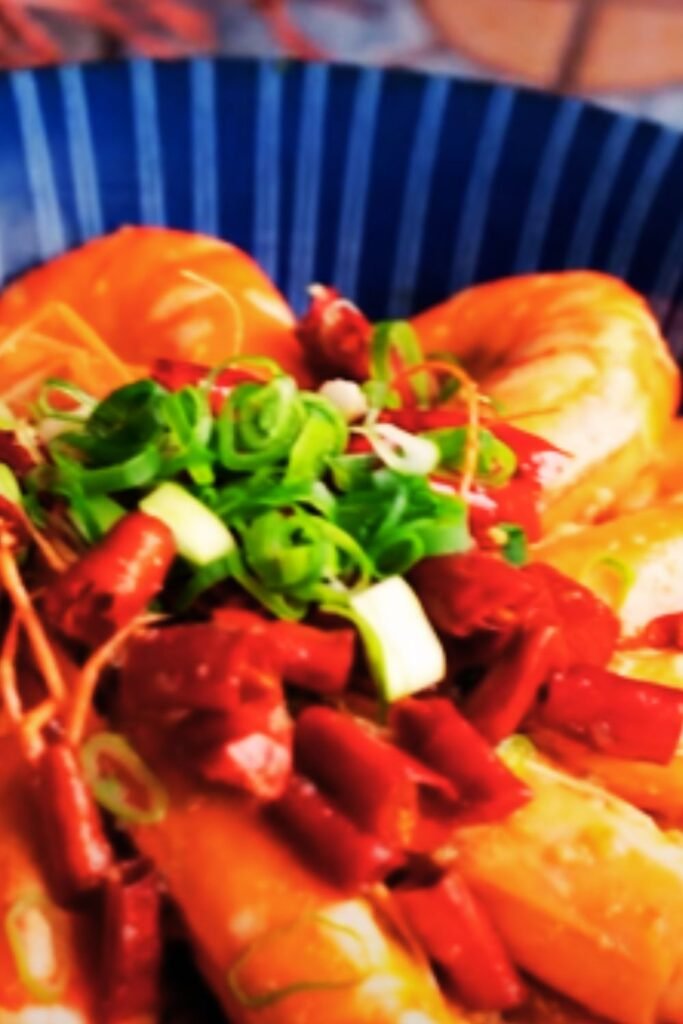
Visual Cues for Perfect Doneness
Knowing exactly when shrimp are done is perhaps the most challenging aspect of this dish. Here’s what I look for:
- The shrimp should form a “C” shape – if they’ve curled into a tight “O,” they’re overcooked
- The color should be opaque pink with slight translucency at the thickest part
- The texture should feel springy when pressed, not mushy or too firm
- The surface should appear glossy from the sauce, not dry
Remember that carryover cooking will continue briefly after removing from heat, so it’s better to err on the side of slight undercooking.
Regional Variations
While staying true to the Shanghai style, I’ve encountered fascinating regional adaptations during my culinary explorations:
Zhejiang Style
- Incorporates Longjing tea leaves for subtle fragrance
- Uses yellow wine instead of Shaoxing
- Often served with a side of vinegar for dipping
Guangdong (Cantonese) Influence
- Incorporates fermented black beans
- Uses much less sugar
- Often includes sliced red bell peppers for color and sweetness
Modern Fusion Adaptations
- Addition of butter for richness
- Use of XO sauce for complexity
- Incorporation of Western herbs like thyme or tarragon
Serving Suggestions
You Bao Xia shines brightest when served as part of a traditional Chinese meal with several complementary dishes. Here are my favorite pairings:
Accompanying Dishes
- Snow pea shoots stir-fried with garlic
- Steamed egg custard with century eggs
- Shanghai soup dumplings (xiao long bao)
- Simple chicken and winter melon soup
Rice Options
- Plain steamed jasmine rice is traditional
- Congee (rice porridge) makes for a wonderful contrast in textures
- If you’re looking for something different, try serving with thin wheat noodles tossed with sesame oil
Garnishes
- Fresh cilantro leaves
- Thinly sliced red chilies for those who enjoy extra heat
- A light sprinkle of toasted sesame seeds
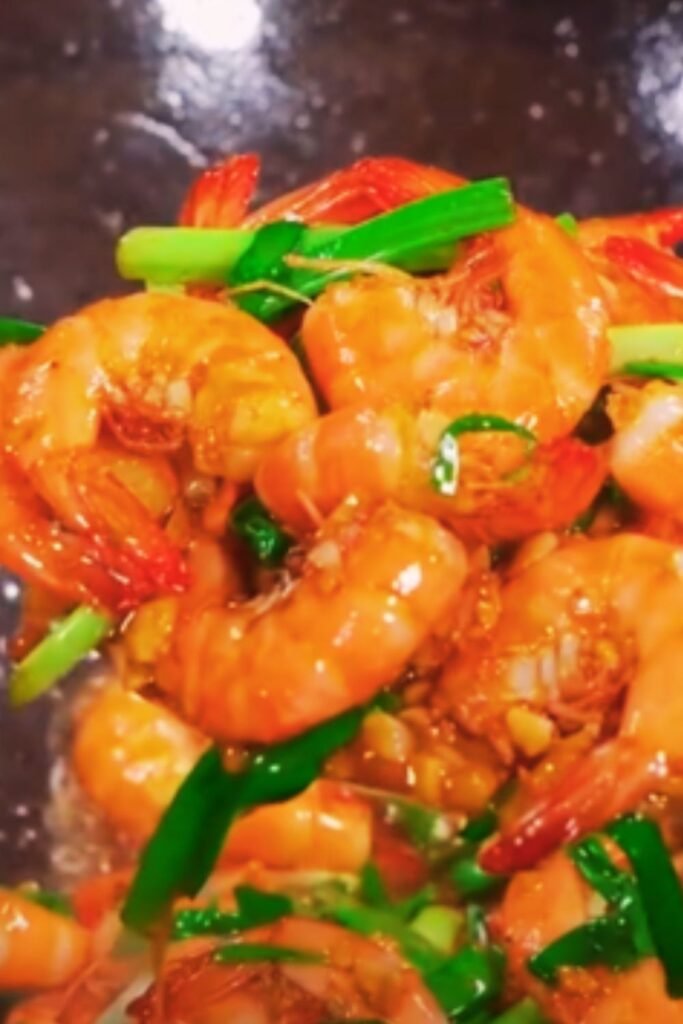
Troubleshooting Common Issues
Even experienced cooks occasionally encounter challenges with this seemingly simple dish. Here are solutions to the most common problems:
Rubbery Shrimp
Cause: Overcooking or poor-quality shrimp Solution: Strictly time your cooking and consider the blanching technique described earlier. Also, buy the freshest shrimp possible.
Watery Sauce
Cause: Excess moisture from shrimp or inadequate cornstarch Solution: Pat shrimp thoroughly dry after washing/blanching and ensure your cornstarch slurry is well-mixed before adding.
Lack of “Wok Hei”
Cause: Insufficient heat or overcrowding the wok Solution: Cook in smaller batches if necessary and ensure your wok is properly preheated.
Broken or Missing Shells (if using shell-on method)
Cause: Excessive stirring or poor preparation Solution: Handle shrimp gently and ensure shells are firmly attached during preparation.
Health Benefits
Beyond its incredible flavor, You Bao Xia offers impressive nutritional advantages:
- Lean Protein: Shrimp is one of the lowest-calorie seafood options while providing high-quality protein.
- Selenium: Shrimp is an excellent source of this antioxidant mineral that supports thyroid function.
- Astaxanthin: The compound that gives shrimp its pink color has powerful anti-inflammatory properties.
- Iodine: Essential for thyroid health and often lacking in modern diets.
- Low Carbohydrate: This dish fits well into various dietary approaches, including low-carb and ketogenic diets.
The cooking method itself preserves nutrients through quick high-heat cooking rather than prolonged exposure that can destroy vitamins.
Storage and Reheating
While You Bao Xia is best enjoyed immediately after cooking, practical considerations sometimes require storage. Here’s how to manage leftovers:
- Refrigeration: Store in an airtight container for up to 2 days. The texture will deteriorate somewhat but flavors will develop nicely.
- Freezing: Not recommended as the texture of shrimp becomes significantly compromised.
- Reheating: Gentle is the keyword here. I prefer using a steamer for 2-3 minutes rather than microwaving. If you must microwave, use 50% power with a damp paper towel covering the dish.
Q&A Section
Q: Can I make this dish ahead for a dinner party? While the prep work can be done in advance, I strongly recommend cooking You Bao Xia just before serving. The magic of this dish lies in that perfect texture and wok hei, which diminishes significantly with time. If you must prepare ahead, consider blanching the shrimp and preparing all ingredients, then doing the final stir-fry just before guests arrive.
Q: Is it worth keeping the shells on, or is that just traditional stubbornness? The shells genuinely contribute tremendous flavor compounds that cannot be replicated otherwise. That said, the shell-off version is still delicious and much easier to eat, especially for those unaccustomed to shell-on preparations. If serving to guests unfamiliar with Chinese dining traditions, shell-off might be more appropriate.
Q: Can I substitute other seafood if shrimp isn’t available? Absolutely! This preparation works beautifully with scallops (reduced cooking time), squid (very brief cooking), or even lobster tail chunks (slightly longer cooking). The key is adjusting the cooking time to the specific seafood while maintaining the same sauce and aromatic components.
Q: My local store doesn’t carry Shaoxing wine. What now? Dry sherry is the best substitute, followed by mirin (Japanese sweet rice wine, but use less sugar in the recipe). As a last resort, a combination of rice vinegar and chicken stock can approximate some of the flavor profile, though it won’t be quite the same.
Q: How spicy is this dish traditionally? Authentic Shanghai You Bao Xia is actually quite mild, with the emphasis on the natural sweetness of the shrimp rather than heat. The dried chilies are more about aromatic notes than spiciness. That said, regional adaptations, particularly from Hunan or Sichuan, may incorporate significantly more heat.
Cultural Significance
You Bao Xia has deep roots in Shanghai’s culinary heritage, reflecting the city’s status as a coastal metropolis with access to abundant seafood. Historically, this dish emerged during the late Qing Dynasty as Shanghai developed into a major trading port.
In traditional Chinese dining culture, seafood dishes like You Bao Xia are often served toward the end of a banquet before the rice and soup courses. The delicate flavors are believed to cleanse the palate and showcase the host’s ability to source the freshest ingredients.
During Chinese New Year celebrations, shrimp dishes take on additional significance as the word for shrimp (虾, xiā) sounds similar to the word for laughter (笑, xiào), symbolizing joy and happiness in the coming year.
Conclusion
You Bao Xia represents everything I love about Shanghai cuisine—respect for pristine ingredients, masterful cooking techniques, and flavors that are sophisticated without being overly complicated. The dish exemplifies the philosophy that when you start with excellent ingredients, you don’t need to mask them with heavy sauces or excessive seasonings.
Mastering this seemingly simple stir-fry actually teaches fundamental principles that apply across Chinese cooking: the importance of preparation, the power of high heat, the balance of flavors, and the critical nature of timing. Each time I prepare this dish, I’m reminded of those bustling Shanghai kitchens where I first fell in love with this cooking style.
I encourage you to approach this recipe with patience and attention to detail. Your reward will be a dish that captures the essence of one of China’s most cosmopolitan cities—refined, elegant, and unforgettable. Once you’ve mastered the basic technique, feel free to experiment with your own variations, perhaps incorporating local seafood or seasonal vegetables that speak to your own culinary heritage.
Happy cooking, and enjoy the journey to Shanghai through your taste buds!
